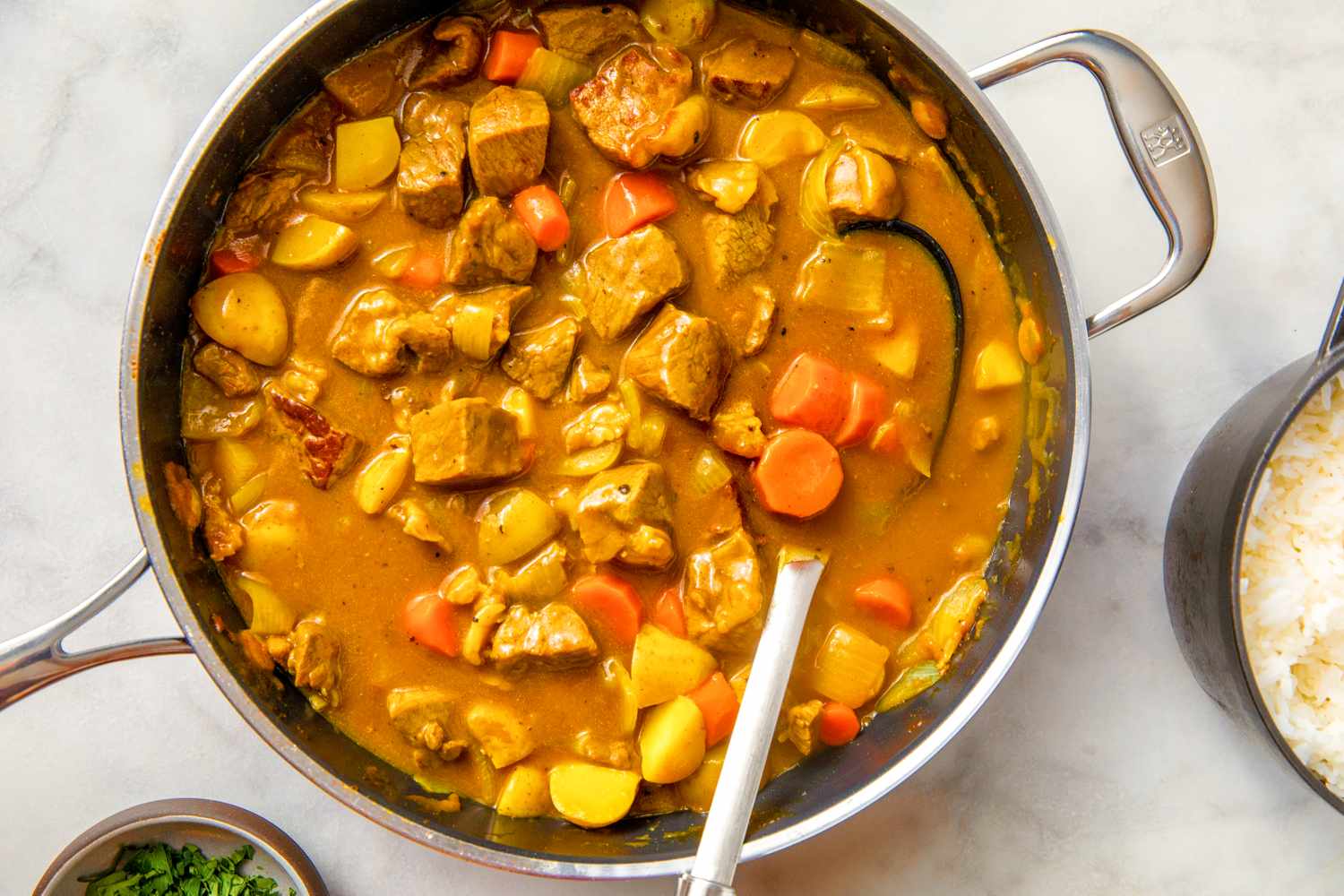:max_bytes(150000):strip_icc():format(jpeg)/Simply-Recipes-Japanese-Curry-LEAD-1-0252e34d024b43a8a04c634fa3966ace.jpg)
- You can make this comforting, flavorful curry in just 40 minutes start to finish.
- Using Japanese curry blocks ensures a rich, foolproof sauce with no stress.
- New York strip steak turns tender quickly, making this dish weeknight-friendly.
Japanese beef curry is one of those trifecta recipes I make all the time, as much as once a week. It’s easy, quick, and comforting. For me, it’s one of those special recipes that feels dreamy and cinematic, almost like watching food being cooked in anime.
There are a few popular versions of Japanese curry. When pork and chicken are served with Japanese curry, they’re often flattened, breaded, and fried as katsu, then topped with velvety curry sauce. While those are equally delicious, I lean toward a simpler version: Japanese beef curry. There’s no frying involved, so no mess or stress.
Simply Recipes / Frank Tiu
What Cut of Beef To Use
For the beef, several cuts work well in this recipe. Ribeye adds richness from its marbling, but it’s a premium cut that I usually reserve for steak served on its own. Stew beef also works since it tenderizes beautifully when cooked for a long time, but it’s not exactly weeknight material.
My preferred cut for Japanese beef curry is New York strip steak. It’s more affordable than ribeye and reaches the perfect tender texture much faster than stew meat. Another reason I love this cut is the thin layer of collagen between the meat and the fat cap, which adds flavor and a bit of texture. That edge is my favorite part, even more than the meat itself.
The key is to cook the steak to medium rare to medium, depending on your preference, so the interior stays tender and juicy.
Simply Recipes / Frank Tiu
What Makes Japanese Curry Different?
Japanese curry is distinctively mild and mellow. Unlike other curries that start with a chili or spice paste, Japanese curry begins with curry blocks—solid cubes of pre-made roux that look like chocolate bars. They’re easy to portion and break apart. Two of the most common brands are S&B Golden Curry and House Foods Vermont Curry. I usually go with Golden Curry because it’s widely available at most grocery stores, including Walmart.
I’ve also tried using S&B’s canned curry powder, but it isn’t the same. The curry powder has the right seasoning blend, but the blocks already contain roux, which naturally thickens the sauce. I love using the blocks because making roux from scratch can be tricky and prone to splitting. Curry blocks take the technique out of the equation—less stress, more joy.
S&B offers four levels of heat: mild (little to no spice), medium hot, hot, and extra hot. I like medium hot since it has the right balance of flavor and heat without being overwhelming. If you enjoy a challenge, try the hot version before venturing into extra hot. If freshly cracked black pepper tastes spicy to you, mild might be more your speed.
When Leftover Is Even Better
This curry keeps beautifully and tastes even better the next day as the flavors deepen. It’s commonly served over white rice, which I like to pack with the curry for easy reheating. The rice firms up slightly as it cools, but the curry adds moisture back when microwaved.
Simply Recipes / Frank Tiu



Leave a Reply